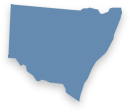Disclaimer
DISCLAIMER
Any advice or information provided on this website is for general informational purposes
only and does not constitute professional or specific advice. The Australian Alpaca
Association makes no representations or warranties of any kind, express or implied, about
the completeness, accuracy, legality, reliability, suitability or availability of the advice or
information contained on this website (including content contained on any external link
provided, or for that of subsequent links) for any purpose. Nor does it assume responsibility
or liability of any kind in relation to any of those things. Any reliance you place on such
advice or information is therefore strictly at your own risk.
Further, this website contains information and content supplied by third parties. While the
Australian Alpaca Association has attempted to make all information as accurate as possible,
any reference to a product or service provider in particular is set out as a convenience and
for informational purposes only, provided in good faith without any express or implied
warranty. For completeness:
• the reference to or provision of details of a product does not constitute a
recommendation, endorsement, favouring, authorisation or approval by the
Australian Alpaca Association, nor an affiliation with it;
• the provision of details of a service provider/third party or related information does
not constitute a recommendation, endorsement, favouring, authorisation or
approval by the Australian Alpaca Association of any of the services, activities,
products or opinions of any such organisation or individual, nor an affiliation thereto;
• the Australian Alpaca Association has neither investigated nor verified (and makes no
representations or warranties as to) the products, service providers/third parties
named on this website, nor their services, activities, products, opinions, reviews,
backgrounds or general suitability.
If you choose to utilise the services or products of any third party whose name or
information appears on this website, it is your responsibility to investigate and verify their
services, activities, products, opinions, reviews and/or backgrounds, and to assess their
individual suitability for your circumstances and requirements.
With the exception of the content of the Farm Finder directory and any featured
advertisements (where applicable) the Australian Alpaca Association has not received
payment from any service provider or other third party named on our website. Further, we
note the list of service providers on our website is non-exhaustive. For anyone requiring a
particular service, the Australian Alpaca Association suggests contacting fellow breeders
within your region directly for recommendations.
The Australian Alpaca Association assumes no responsibility for:
i. the completeness, accuracy, legality, reliability, suitability or availability of the advice
or information contained on this website (including content contained on any
external link provided, or for that of subsequent links);
ii. the use of or reliance on any such information, as set out above; nor
iii. any loss or damage (of any type, for any reason, however caused, or under any
theory of liability) arising in any way out of the use of any information whatsoever
made available on this website.
In no event will the Australian Alpaca Association be liable for any loss or damage (including
without limitation, indirect or consequential loss or damage) whatsoever arising from any
loss (including loss of data) arising out of, or in connection with, the use of this website or
any information contained within it.
The Australian Alpaca Association reserves its right to make changes to the materials on this
website at any time without notice, and to impose limitations on access to the content. This
website is under constant amendment to provide the latest and most accurate information
available. Some information, however, may not be current and this must be considered
when accessing published information.
Please note: Should any service providers wish to have their details added, amended or
removed from our website, please contact the AAA via the “Contact Us” page.
Alpaca Fleece and Fibre
Alpaca fibre is classified as “wool” because of its chemical composition (keratin) and shares many common properties with sheep wool. Yet on closer analysis it has many characteristics which make it quite different – very little lanolin, a generally faster growth rate which results in a smoother outside cell structure which causes less prickling at comparable microns (i.e. a higher comfort factor), better overall lustre and the ability to withstand a higher level of abrasion that improves the longevity of its end products.
Available in natural colours but easily dyed, there are many elements that alpaca fibre can be used for. Depending on your alpaca breed, the fleece will have different characteristics.
Huacaya fleece is often described as “sheep wool-like” because of its crimping bundles and the way the fleece sits out from the animal’s body inn an integrated yet organised mass. Huacaya fibre crimp characteristics are variable and dictate the end use of the fibre – eg very deep crimp waves in fine or medium micron fibre make ideal yarn for knitted products whilst flatter crimps with longer intervals in fine micron fibre is better suited to woven garment fabric manufacture.
Huacaya alpacas should have a uniform fibre with a consistent colour, length, strength and crimping. It is consistently bright and fine, with little guard hair. Suri alpacas provide a fleece of greater lustre, yet share many of the same ideal properties, including integrity of colour, consistent length, strength, and a lack of guard hair. Healthy alpacas should produce a consistent yield across their bodies.
Many of these fleece characteristics are determined by genetics. The fibre types, fineness, colour, length, guard hair, crimp, brightness and yield are all genetically determined; however, nutrition and health also play a large role in the fineness, length, strength and yield of the fleece.
Some important key terms:
Mid Side Sample : A sample of wool (a small hand full) taken from the mid point on the side of an alpaca usually at the time of shearing.
Histogram : A method of graphing the distribution of individual fibres in a fleece sample. When comparing histograms, visual impressions may be distorted if the scale frequency differs.
Micron : the measurement of the diameter of the cross section of a fibre. 1 micron = 1 millionth of a metre.
Mean Fibre Diameter : In a fibre test, a sample of wool is laser scanned to find the mean or average fibre diameter of the measured sample. The fleece is more valuable if the average fibre diameter measured in microns is lower.
Standard Deviation : A measure of how much the fibre diameter varies within the tested sample. This is also measured in micron.
Coefficient of Variation : Calculated by dividing the standard deviation by the average fibre diameter and then multiplying by 100. It measures the range of fibre diameter variation relative to the average fibre diameter.
Coarse Edge Micron : Indicates the number of microns greater than the average in the area of the coarsest 5% of fibres tested. Better quality and more uniform fibre distribution is indicated by a lower percentage of coarse edge fibre.
Comfort Factor : The percentage of fibres less than 30 micron.
Crimp : The waviness of a fibre. It can be measured and expressed as the number of complete waves per unit length. Although not always a reliable indicator, finer fibre often has more crimps per unit length.
Staple : A well defined pencil like bundle of fibres that are aligned.
Density : A reference to how much wool an alpaca is carrying and a term that is often used in the show ring. Although there are many indicators of density, they can be misleading due to variations in micron. Skin follicle testing and weighing shorn fleece are reliable methods of determining an alpaca’s fleece density
Length: measured length from skin tip of fibre / staple / bundle
Guard hair: the primary (coarser) and often longer fibres within the fleece
Secondary fibres: the finer and shorter fibres within a fleece
Lustre: the brightness of the fleece, apparent as pearliness, sheen or shine
Handle: apparent when feeling the fleece as “slipperiness” ” silkiness” or ” soapiness”
Lock architecture: refers to lock formation with the fleece – lock type, evenness or distribution, separation (the fleece should swing independently when the animal is in motion)
Compactness: describes the heaviness or weight in suri fleece and is a guide to fleece density.
Shearing
Alpacas need to be shorn annually. This is usually done in spring or early summer so that the alpacas have grown enough fleece back before the weather cools again and so they have their fleece removed before the weather gets too hot.
- ensure that your alpacas are kept n a clean paddock before shearing
- if fleeces contain loose vegetable mater,m remove as much as possible. Some types of vegetable fault cannot be removed by hand (i.e. burrs and barley grass should be left as is)
- During the shearing of each alpaca, collect and bag all lower legs, bellies and aprons as soon as they are shorn. This is to prevent contamination of neck and saddle fibre
- Place each neck in a bag as it is shorn
- properly skirt fleeces before placing them in a bag
- to skirt, lay fleece s out on the skirting table with the cut side down and quickly remove any coarse, hairy fibre from the edges of the saddle. These skirtings can be placed in the same bag as the belly, chest and legs or in a separate bag
- fold the fleece edge to edge (down the back line) with the cut side up
- roll up the folded fleece length ways and place in a clear plastic bag
- bag each fleece separately. Place lower leg, belly and apron bag, and neck bag in with the appropriate fleece
- correctly label each bag with the grower name
- Avoid storing fleeces for prolonged periods to reduce the risk of pest infestation or contamination
Fibre Testing
Objective traits such as fibre diameter, variation of fibre diameter, incidence of coarse fibre (comfort factor) and staple length provide clear expectations on processing / spinning performance and eventual yarn / fabric quality. These traits therefore play a significant factor in determining the value of fleeces.
Monitoring objective fibre traits using fibre measurement, therefore makes a lot of sense. It allows alpaca producers the opportunity to select alpacas that are likely to produce the most valuable fleeces. Further it also provides an insight into the genetic potential of breeding stock to produce progeny capable of growing valuable fleece.
If you are interested in learning about how to manage your alpaca fleeces from shearing, skirting, storing and processing please contact your regional president. With enough interest, the region will run a Shearing, Skirting and Fleece Preparation Workshop.
Fibre Processing
There are several steps involved to take shorn alpaca fibre in it’s raw form to transform it into the finished product of purchasable and useable alpaca fleece. There are a number of businesses around Australia that also buy and process alpaca fleece.
Guaranteed Australian Alpaca
The AAA licenses the use of a “Guaranteed Australian Alpaca” logo for products that contain alpaca from Australia, are completely made in Australia (i.e. fleece, hide or meat has not left Australia) and are in a form which is considered a “commercial” product (i.e. not bales of fleece)
 Login / Signup
Login / Signup Regions
Regions







 Search
Search